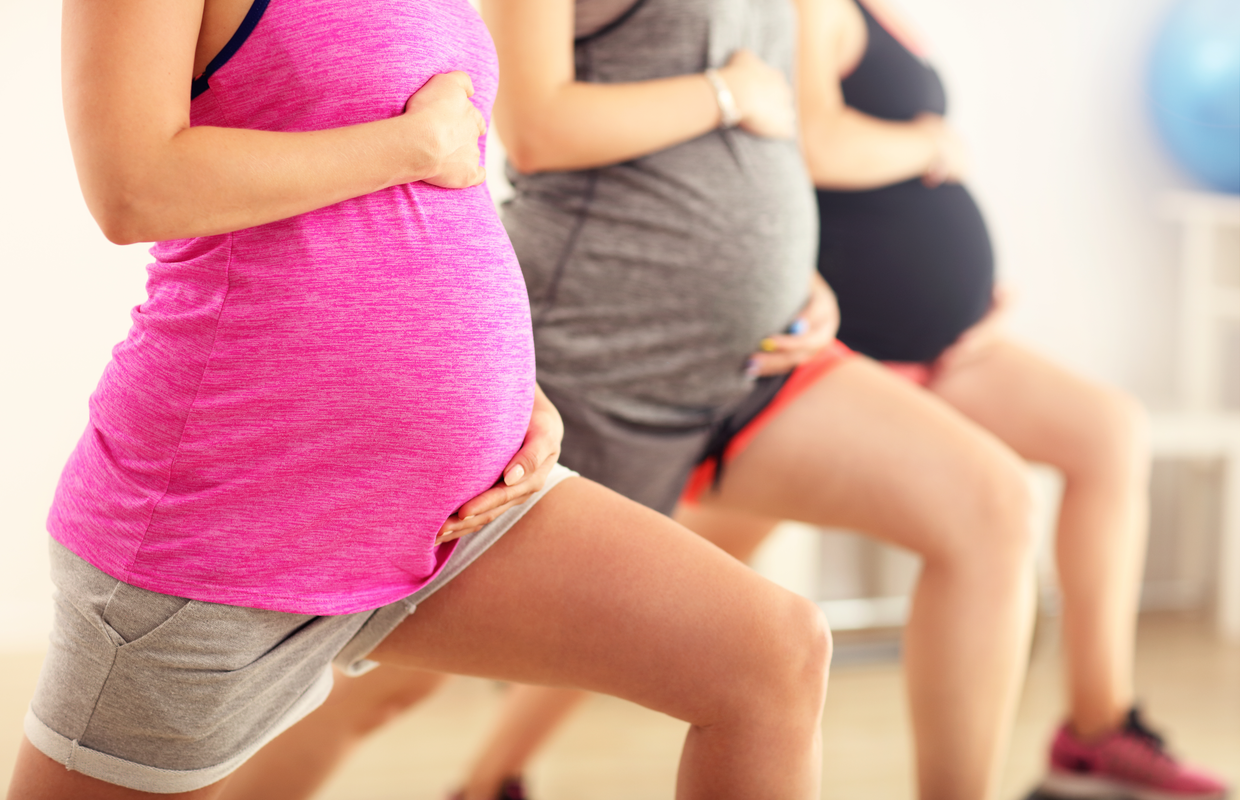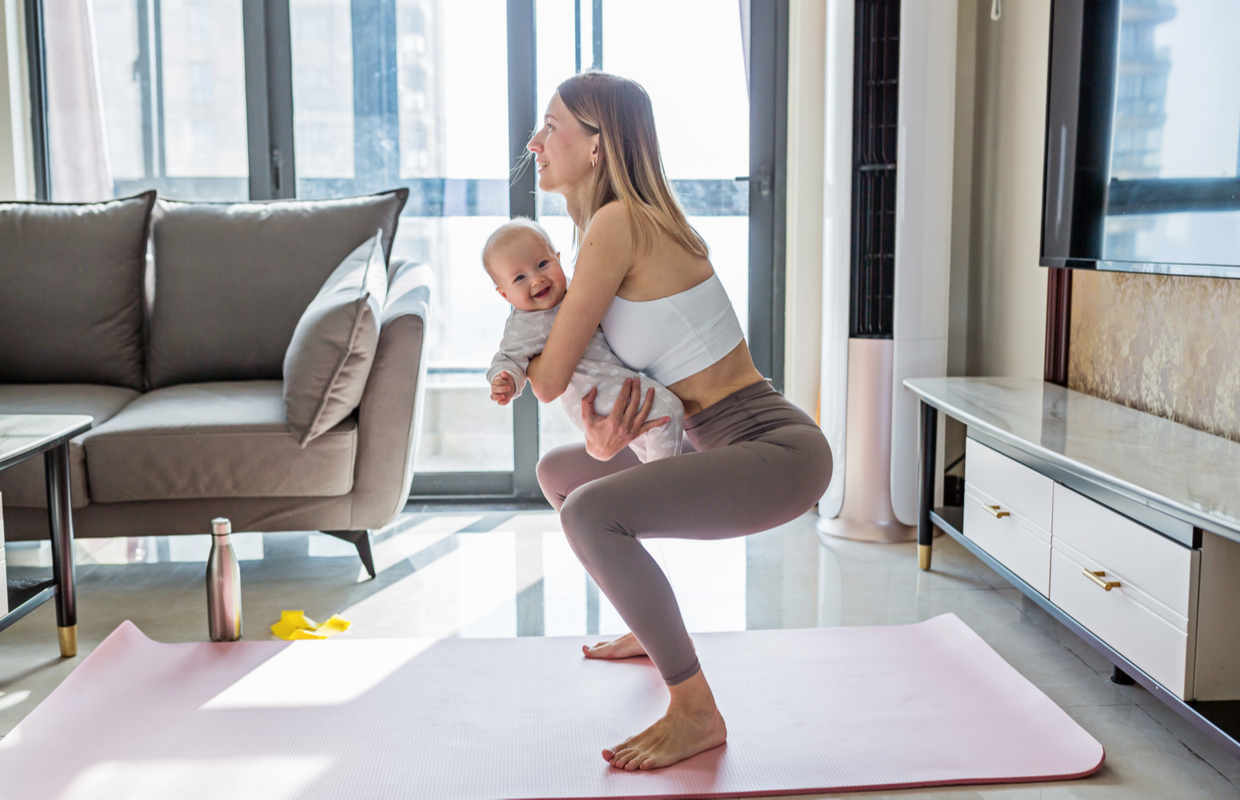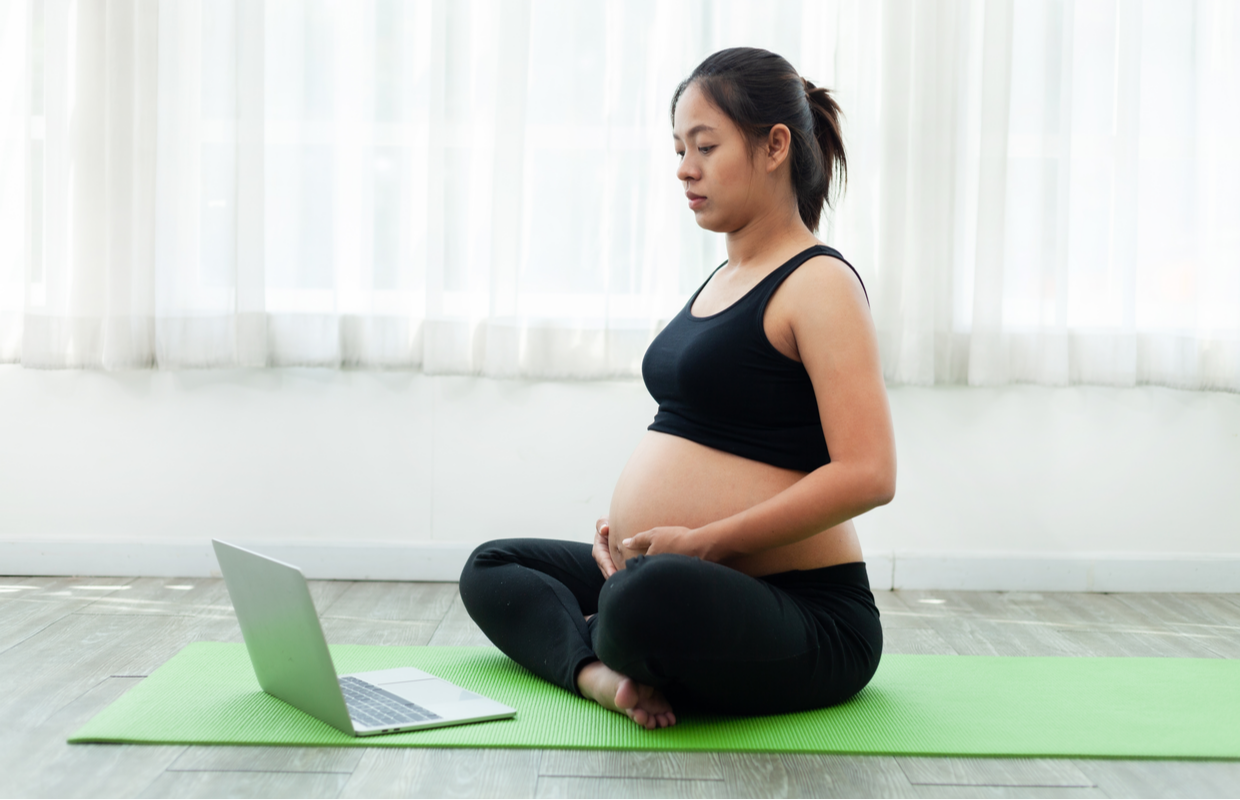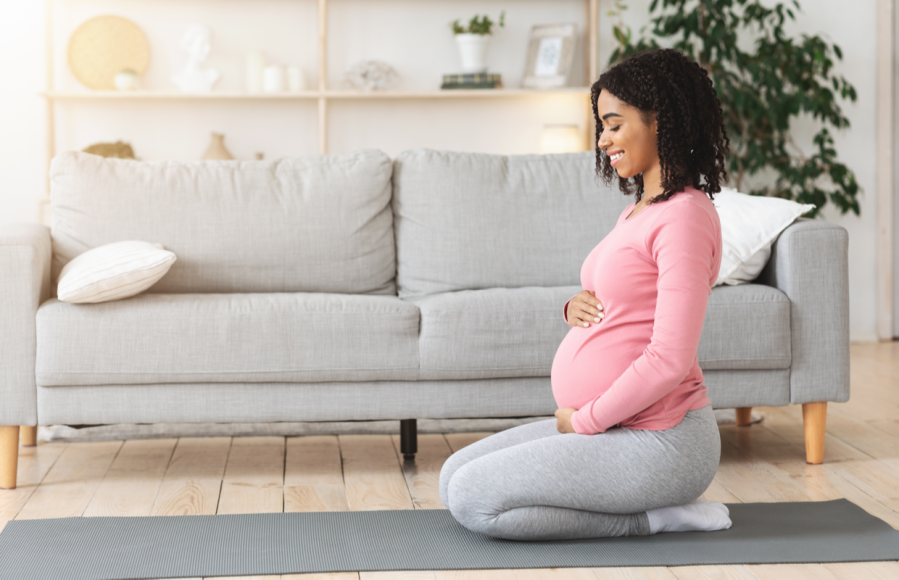Heard that staying active is key to a healthy pregnancy? Here’s how to maintain your fitness and exercise safely both during and after pregnancy…
Exhaustion, sore boobs, nausea, food cravings (and aversions)… there’s a lot to deal with when pregnant, so we understand if you just want to relax. But there may be days when a little movement sounds appealing and, for active mamas-to-be, the notion of taking a nine-month hiatus from exercise can seem like a long slog. The good news is that a slew of research backs staying active as a great way to improve the health of both you and your baby.
Meet the experts on exercise during pregnancy:
- Sarah Campus is a PT, nutritioncoach and founder of LDN MUMS FITNESS. She specialises in pregnancy and postpartum diet, fitness and wellness. See @ldnmumsfitness.
- Hollie Grant is a pre- and postnatal fitness expert and founder of The Bump Plan. She can be found posting @thepilatespt.
- Lucy Young, is a PT, pre-and postnatal exercise specialist and Polar global ambassador. Find out more at polar.com/uk.
- Kristin McGee is a Peloton instructor. Peloton offers a wide variety of pre- and postnatal classes across disciplines such as yoga and strength. Each class is carefully designed with modifications appropriate for expectant mothers. Visit onepeloton.co.uk.
- Wendy Powell is a pre- and postpartum fitness expert. She founded the MuTu System, a medically recommended and proven support programme for mums.
Should I exercise during pregnancy?
‘Staying active while pregnant can help boost your mood and energy, reduce the risk of gestational diabetes, improve sleep and decrease postpartum recovery time,’ explains Lucy Young, a pre- and postnatal exercise specialist. ‘That’s quite the list of positives, so it’s no surprise many women now forgo outdated advice that advocates a more sedentary lifestyle during pregnancy.’
While there can be medical reasons to avoid exercise during pregnancy (check with your doctor or midwife to be sure), the key is to suss out what pre- and postnatal exercise is right for you, then follow trusted guidelines. ‘The Department of Health recommends that pregnant and postpartum women aim for 150 minutes of moderate-intensity exercise weekly,’ says Hollie Grant, founder of The Bump Plan.
‘This should include some strength work (such as weight training or Pilates) and something that has a cardiovascular effect (increases breath and heart rate).’ Still got questions? We tapped the experts to get common concerns answered…

Pre-natal fitness: how to exercise safely during pregnancy
Can you exercise while pregnant if you never exercised before?
Sarah says: ‘If you didn’t exercise before pregnancy, start gradually and seek support from an expert to help you work out what you can and can’t do to exercise safely. Pregnancy isn’t a time to start new fitness fads that may cause harm to you or your baby, so be mindful, be sensible and listen to your body.
‘If you exercised regularly before pregnancy, it’s generally safe to continue at the same level of intensity as long as you feel comfortable with it and your healthcare provider gives you the go-ahead. You will need to make modifications during each trimester, so speak to a pre- or postnatal exercise specialist to guide you on this.’
How do I know I’m exercising safely during pregnancy?
Sarah says: ‘You should be able to carry out a conversation as you work out. This ensures you’re not over-exerting yourself and are exercising at a safe intensity for you and baby.
‘It is safe to sweat during pregnancy, but ensure that you don’t feel too exhausted after exercise and instead feel energised. You shouldn’t feel any pain before, during or after a workout. Listen to your body; if something doesn’t feel right, stop and seek professional advice. Use weights if you feel comfortable doing so, but adjust the weight according to how you feel.’
Can I run while pregnant?
Lucy says: ‘The most common fear I’ve encountered from pregnant runners is a hesitancy to run for fear of miscarriage. However, modern research suggests miscarriages (particularly in the first trimester) have no connection with exercise. Instead, they’re linked to a range of possibilities.
‘Given that, the question ‘can you run while pregnant?’ is less about miscarriage and more about what signs and symptoms you’re experiencing. Many runners feel pelvic floor pressure from the second trimester onwards, as the baby’s weight starts to place a significant load on the pelvic floor.
‘Typically, when women feel pelvic floor ‘heaviness’ or discomfort, it’s a sign that their pelvic floor is struggling to handle the demands placed on it, so I advise pulling back on activities such as running. I also remind clients that safeguarding their pelvic floor during pregnancy can help mitigate the risk of damage and assist in speeding up post-baby recovery. For more advice, visit polar.com/blog/running-while-pregnant.’
Can you do workout classes during pregnancy?
Hollie says: ‘You could continue going to a group class, especially in the first trimester, as long as you’re working at a moderate intensity. Moderate intensity means that it raises your heart rate but you can still have a conversation. Any struggling to talk or breathe is pushing into a higher intensity. It’s hard to generalise on a group class, however. If it’s HIIT, no not really. If it’s Pilates, yes. It depends on the class, ideally go to a prenatal class.’
Which exercises should be avoided during pregnancy?
Sarah says: ‘During pregnancy, you should avoid contact sports such as rugby or boxing, sports carrying a falling risk, such as horse riding or skiing, or extreme sports such as bungee jumping. Also, don’t do any crunching abdominal exercises as, during pregnancy, your abdominal muscles are moving apart to allow baby to grow.
‘Postnatal ab crunching is not advised until six-to-12 weeks postpartum to help avoid diastasis recti (separation of the abs). Any exercises that require holding your breath are also off limits, and don’t exercise lying flat on your back or stomach from the second trimester onwards.’

Post-natal fitness: how to exercise safely after pregnancy
What exercise should I do after pregnancy?
Hollie says: ‘In the first six weeks after pregnancy, you want to prioritise rest, but equally you can do some breathwork because your breathing will have changed during pregnancy. Do pelvic floor (kegel) exercises, which need to be a combination of exercise “holds”and “pulses”.
‘You can also do some deep core activation, like abdominal hollowing and TVA (transverse abdominal) activation. Plus, you can try activities such as walking as soon as you feel comfortable doing it. Every labour is different, so listen to your body.’
When can I start exercising again after giving birth?
Sarah says: ‘If you had a vaginal birth, it’s advised you wait six weeks before restarting exercise, so long as you have clearance from you midwife or healthcare provider. If you had a C-section delivery, you’re advised to wait 10-12 weeks, again after receiving clearance to exercise. You can start doing pelvic floor exercises though, as soon as you have given birth and feel comfortable to do so. Once you’ve had the all-clear, be sure to get your abdominals checked to ensure you don’t have diastasis recti.’
How can I support my post-natal recovery?
Wendy says: ‘It’s easy to get overwhelmed by the “snap back” and unrealistic messaging surrounding postpartum fitness. However, your body needs time and rest to recover. Take as much help and support as you can to enable you to sleep. My advice for getting your recovery off to the best start, is to be kind to your body. Take time to appreciate and recognise the work of pregnancy and birth.
‘Take a gentle daily walk, hydrate and eat nourishing and healing food when you can. Restorative recovery exercises specifically designed for post birth, are vital for effective strengthening and for pelvic floor and core strength.’
Is it normal to feel unmotivated to exercise after pregnancy?
Kristin says: ‘I completely relate. After having my second and third at once [twins], I was unmotivated and exhausted. We put a lot of pressure on ourselves as mums to do it all. We need to adjust our expectations, but also prioritise our health and fitness. When we take care of ourselves physically it makes a huge difference in our lives.
‘Reframe why you’re exercising – “so I can have a ton of energy for my baby”; “because I want to push my buggy without getting fatigued”; “so I can pick up my children effortlessly”; “so I can carve out some precious me-time”; “or, because I want to stay healthy for the long run and be there for my kids”. Use that reason as a motivator to move.
‘Once you prioritise fitness again it has a snowball effect. You feel better, you have more energy, you sleep better and then you really want to work out! Your baby can join in (a buggy walk in the park, or baby and me yoga) or watch, or you can sneak it in while they nap. Alternatively, ask a friend/partner/babysitter to help, so you can take care of you!’

Best online fitness platforms for mums and mums-to-be:
Mamawell (£7.99 monthly)
This bespoke workout programme for pre- and postnatal women was founded by women’s fitness specialist Rosie Stockley. Rosie has trained Vogue Williams, Binky Felstead, and more.
Peloton Pre & Postnatal Class Series (£12.99 monthly)
Share the journey of motherhood alongside instructor Robin Arzón. Featuring her collection of 26 cycling and strength classes for mums-to-be and new mums, the series is available on the Peloton App.
Mother Fit (from £9.99 monthly)
This subscription service boasts fitness classes, antenatal care, nutrition tips and an online community. Members on their pregnancy journey will enjoy a weekly programme tailored to the week of their pregnancy, plus support into motherhood.







